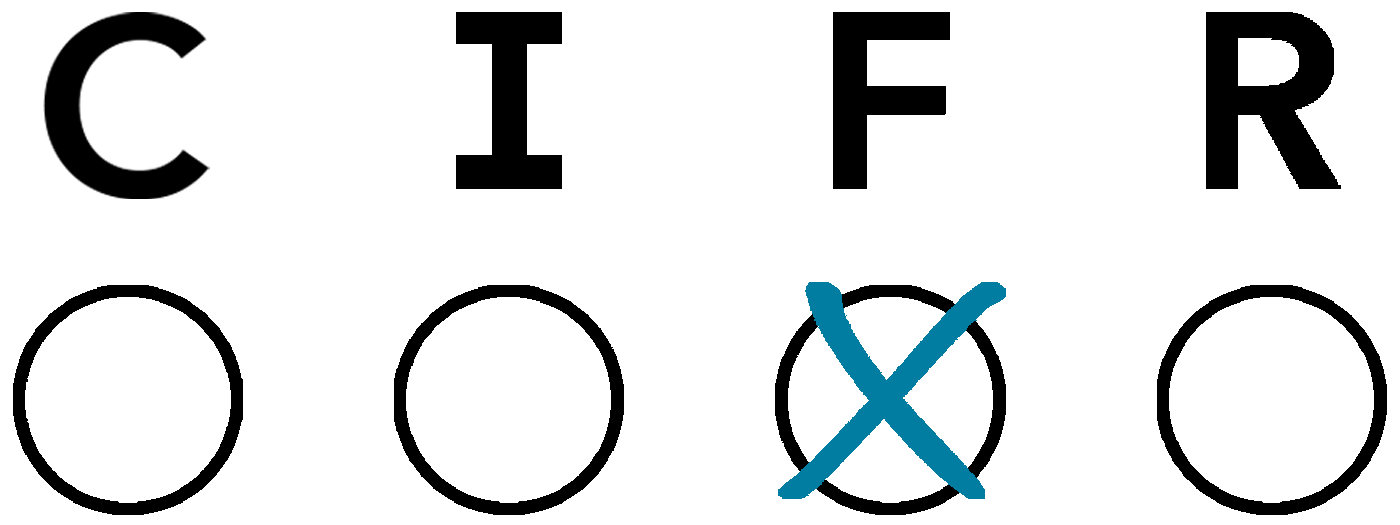CIFR | References
References
CIFR
Kay, C. S. & Saucier, G. (2023). The Comprehensive Infrequency/Frequency Item Repository (CIFR): An online database of items for detecting careless/insufficient-effort responders in survey data. Personality and Individual Differences.
Sources
Beach, D. A. (1988). Identifying the random responder. Journal of Psychology, 123(1), 101–103.
Benning, S. D., Barchard, K. A., Westfall, R. S., Brouwers, V., & Molina, S. M. (2018). Development of the Meanness in Psychopathy-Self Report. Manuscript in Preparation.
Curran, P. G., & Hauser, K. A. (2019). I’m paid biweekly, just not by leprechauns: Evaluating valid-but-incorrect response rates to attention check items. Journal of Research in Personality, 82, 103849.
Dunn, A. M., Heggestad, E. D., Shanock, L. R., & Theilgard, N. (2018). Intra-individual response variability as an indicator of insufficient effort responding: Comparison to other indicators and relationships with individual differences. Journal of Business and Psychology, 33 (1), 105–121.
Fervaha, G., & Remington, G. (2013). Invalid responding in questionnaire-based research: Implications for the study of schizotypy. Psychological Assessment, 25(4), 1355–1360.
Forer, B. R. (1949). The fallacy of personal validation: A classroom demonstration of gullibility. Journal of Abnormal and Social Psychology, 44(1), 118–123.
Hargittai, E. (2009). An update on survey measures of web-oriented digital literacy. Social Science Computer Review, 27(1), 130–137.
Huang, J. L., Bowling, N. A., Liu, M., & Li, Y. (2015). Detecting insufficient effort responding with an infrequency scale: Evaluating validity and participant reactions. Journal of Business and Psychology, 30(2), 299–311.
Kay, C. S. (2021). The targets of all treachery: Delusional ideation, paranoia, and the need for uniqueness as mediators between two forms of narcissism and conspiracy beliefs. Journal of Research in Personality, 93.
Kay, C. S. (2023). The anatomy of antagonism: Exploring the relations of 20 lexical factors of personality with Machiavellianism, grandiose narcissism, and psychopathy. Unpublished Manuscript.
Lilienfeld, S. O., & Widows, M. R. (2005). Psychopathic Personality Inventory - Revised (PPI-R): Professional Manual (pp. 1–160). Lutz, Florida: PAR.
Lynam, D. R., Gaughan, E. T., Miller, J. D., Miller, D. J., Mullins-Sweatt, S. N., & Widiger, T. A. (2011). Assessing the basic traits associated with psychopathy: Development and validation of the Elemental Psychopathy Assessment. Psychological Assessment, 23(1), 108–124.
Maniaci, M. R., & Rogge, R. D. (2014). Caring about carelessness: Participant inattention and its effects on research. Journal of Research in Personality, 48(1), 61–83.
Meade, A. W., & Craig, S. B. (2012). Identifying careless responses in survey data. Psychological Methods, 17(3), 437–455.
Paulhus, D. L. (1988). Assessing self-deception and impression management in self-reports: The Balanced Inventory of Desirable Responding. Unpublished Manual, University of British Columbia, Vancouver, Canada.
Snyder, C. R. (1974). Why horoscopes are true: The effects of specificity on acceptance of astrological interpretations. Journal of Clinical Psychology, 30(4), 577–580.
